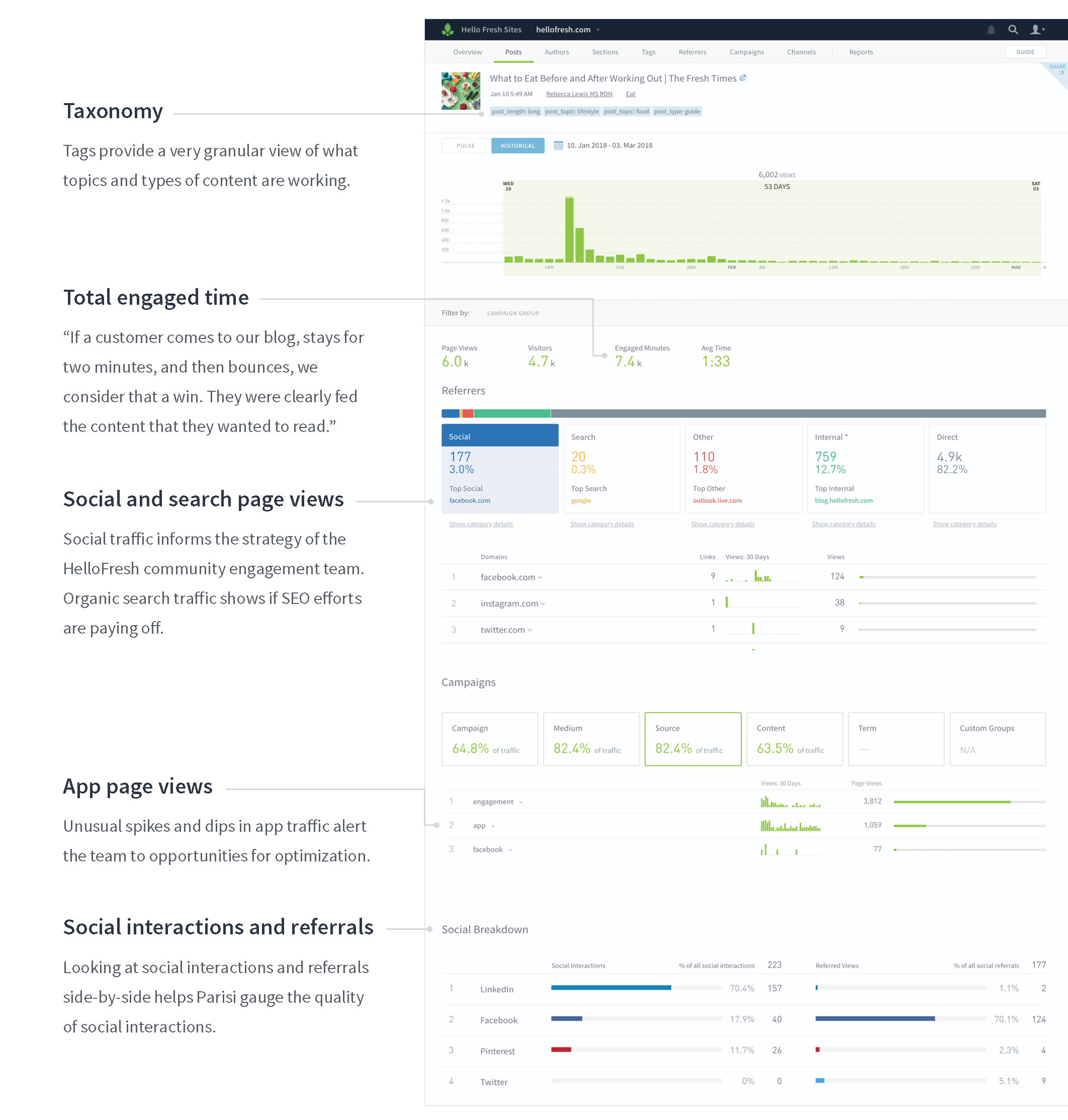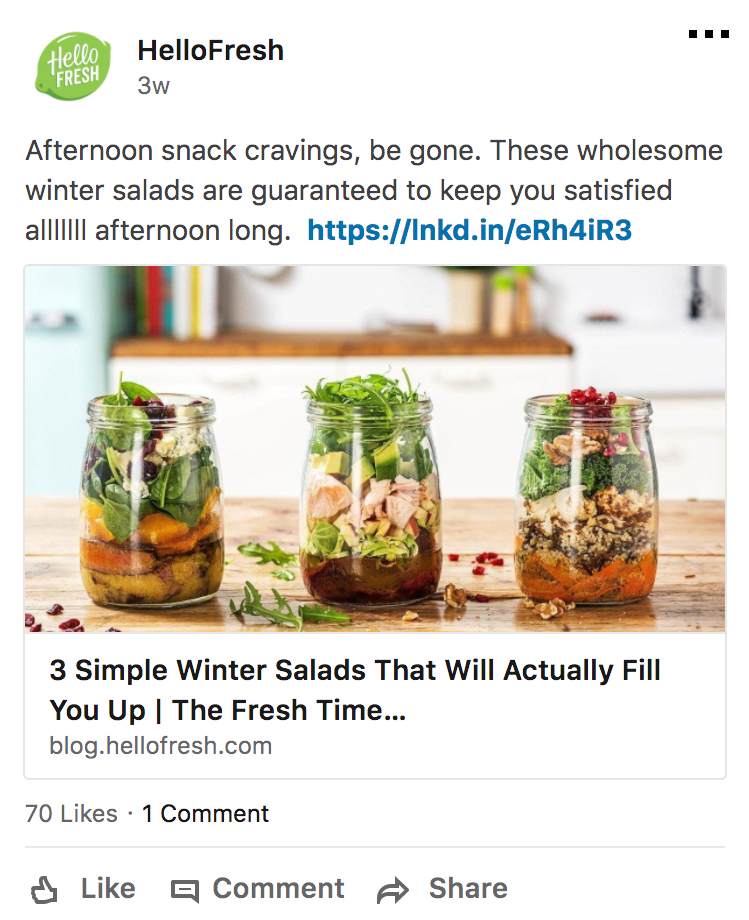4 Content Marketing Challenges and How to Solve Them with Content Analytics

Ninety-six percent of top-performing content marketers report that effective content marketing has been key to helping them foster trust and create stronger connections with their audience.
But without data-backed insights, you’re making strategy decisions in the dark—decisions that can make or break your content marketing and, ultimately, your credibility with your audience. Unfortunately, many content marketers find it difficult to understand their content data and end up making strategy decisions based on gut feel.
In our Content Matters 2022 report, we found that 49% of content marketers don’t know how their content is really performing, even when most of them are tracking content metrics. We’re here to help remedy that.
Learn how to solve four common content marketing challenges with insights from content analytics, so you can create a more effective and engaging journey for your users.
- You’re not receiving enough content engagement
- You don’t know the best channel to create or promote your content
- Your content isn’t driving conversions
- You have poor audience loyalty
You’re not receiving enough content engagement
Generating content engagement is a core challenge many face in content marketing. Poor content engagement may signal that your audience is not connecting with your content, and that you’re not connecting with the needs and expectations they have at their stage of the user journey.
How to drive stronger audience connections
With data-backed insights, you can understand what content is driving engagement and where to promote that content that best fits the needs of your target audience. Using content analytics, you can review key metrics, such as the number of page views and the length of time users spend engaged on pages.
Higher page views and engaged time indicate that a user is finding the content relevant to their needs and likely clicking from one piece to the next.
Do more of what works, and less of what doesn’t.
HelloFresh, a food delivery service, was seeking a way to help its brand stand out in a saturated category by ensuring it had strong content engagement on its various channels. Before using Parse.ly’s content analytics platform, the brand was unable to glean enough insights from Google Analytics to evaluate which content strategies were working.
Using Parse.ly’s analytics dashboard, HelloFresh focused on key metrics such as total engaged time, social and search page views, and social interactions and referrals. They discovered that promoting articles on LinkedIn was an effective way to create more engagement with their business audience.

HelloFresh’s metrics using Parse.ly

LinkedIn post from HelloFresh featured on Parse.ly
To connect with LinkedIn’s executive audience, HelloFresh promoted a mason jar salad recipe with copy like “Goodbye sad desk lunches. You’ll be the envy of your co-workers with this perfectly portable mason jar salad.”
You don’t know the best channel to create or promote your content
Knowing which content distribution channels generate the best results is a key challenge content marketers face. Avoid wasting time, money, and resources with insights that clue you into which content is right for which channel.
How to zero in on your top-performing content channels
Data insights into channel performance give you a better understanding of where your audience is engaging—and where to magnify your content reach.
Digital media giant Gannett wanted to get a deeper look into their content performance in real time to make better strategy decisions after they merged with Gatehouse Media. Using Parse.ly’s reporting, author, and social referral metrics data, they were able to answer questions like “Which content should be promoted on which social channel?” and “What changes need to be made to content so it will perform better on a certain social channel?”
Reporting on audience engagement metrics across 600+ publications, Gannett uses Parse.ly to review their top-performing posts and home in on the best channels to generate content. For example, the Rockford Register Star ran a feature on a hat collector that performed particularly well on Facebook. Data-driven insights inspired the media company to create a companion video campaign to further amplify the story and its reach.
Your content isn’t driving conversions
Determine whether content is contributing to your business’s bottom line. Engagement is great, but your boss likely cares more about what’s getting people to click, sign up, or buy. High engagement but low conversions is a sign that your content might be interesting but not compelling, and that it isn’t contributing to your business’ bottom line.
In our Content Matters 2022 report, we found that only 27% of content marketers have specific revenue goals tied to content—with one in six unsure what the most effective revenue driver is for that content. The best content marketers, however, understand how their work contributes to revenue generation, and create compelling content that gets readers to convert.
How to boost conversions
To amplify conversions, you need to tie your content to the revenue-related actions readers take on your site. With content analytics, doing that is simple. You can see what content drives conversions, and do more of it.
Backstage, an entertainment industry marketplace, sought a way to drive its audience to take certain actions with its content and increase conversions. As a marketplace, the job listings the company posts on its site are a direct means of generating revenue. The company needed to know which content—in this case, job listings—led to which action outcomes, so they could invest resources accordingly and drive up conversions.
Using Parse.ly, Backstage set up reports and alerts to learn what content led to which events and to home in on listings that yielded significant results. Knowing which content drove outcomes, they had a better understanding of where to allocate ad dollars, which maximized conversions and ROI. Backstage achieved a 20% increase in conversions and a 25% increase in revenue attributed to content marketing.

You have poor audience loyalty
While conversions are important for the bottom-line growth of your business, audience loyalty to your content is a vital factor in high customer lifecycle value. To sustain your business long-term, you need customers who return again and again.
How to grow audience loyalty and increase subscriptions
To cultivate a more loyal audience, you need insight into how your audience is interacting with your content. Track audience loyalty by reviewing key metrics, like engaged time and returning visitors. With this information, you can design a user journey that keeps your audience engaged and loyal long-term.
Slate, a digital magazine that covers current affairs, politics, and culture, used Parse.ly’s engaged time as their “north star”’ metric to create a more effective user experience that resulted in improved loyalty and increased subscriptions. They also employed Parse.ly’s recommended content API, which suggested related content pieces for users to facilitate an infinite scroll experience. Related content kept users on its site for longer and created a more satisfying user experience.

Slate’s infinite scroll of posts it created using Parse.ly
According to David Stern, Slate’s VP of product development, “if readers spend more time with content that they value, they’ll be more likely to view more ads while they’re reading, share our content, and join our membership program, Slate Plus.”
A final word of content advice
In a world with continuously changing customer preferences and constant volatility, content analytics is key to gaining crucial insights to better inform content personalization and build customer relations. Use Parse.ly’s dashboard to discover how to tailor your content to meet the needs and preferences of your audience to create stellar user journeys that your customers and subscribers can’t get enough of.